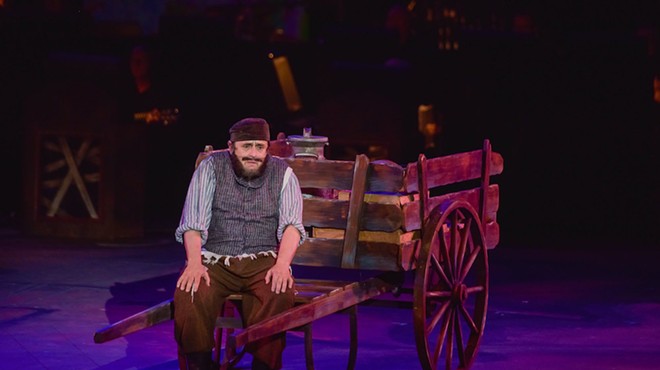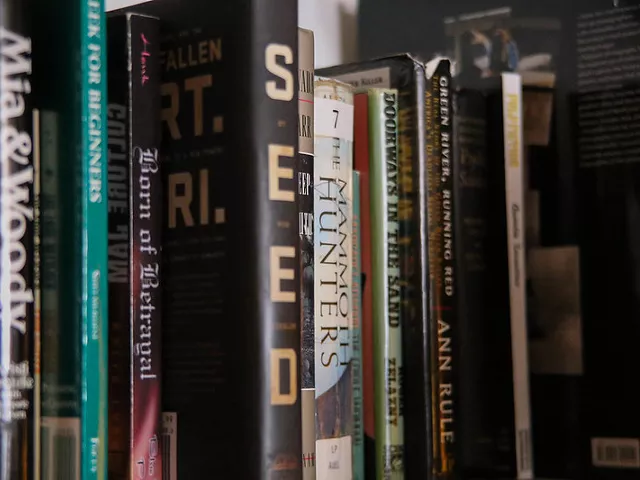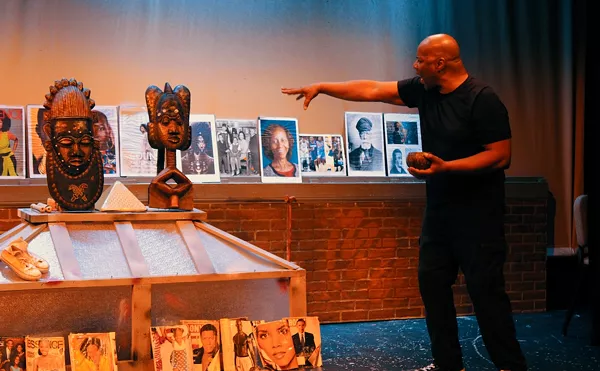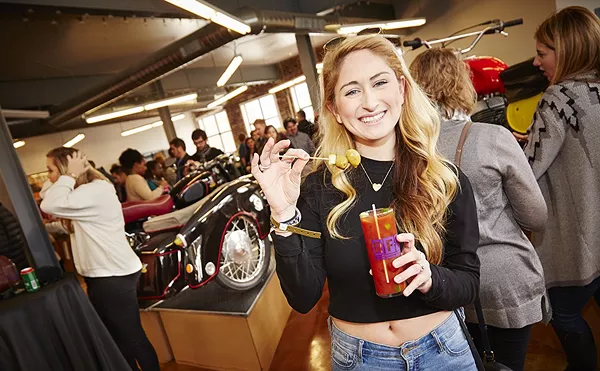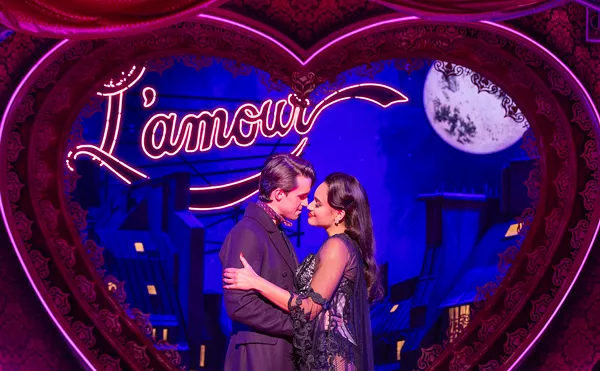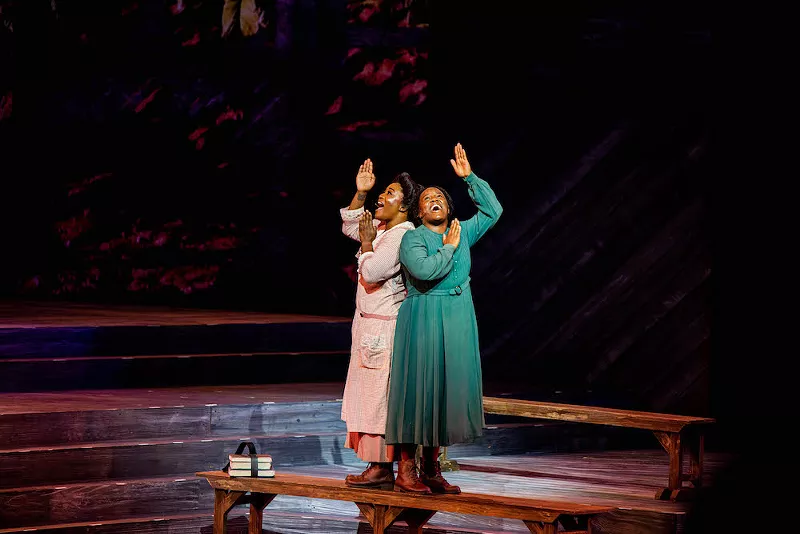
JULIE A. MERKLE
Nasia Thomas as Nettie and Anastacia McCleskey as Celie in The Color Purple now at the Muny.
I was not in the mood to go see The Color Purple at the Muny on Thursday. I was tired and my scant knowledge of The Color Purple (don’t revoke my Black card, but I’ve never read it) was that it was about a girl who was raped by her father and forced to live with another man who abused her.
The week had already included one sex-abuse scandal. So my first thought was, “No thanks.”
But, I went. Within the first minute or two I knew I’d made the right decision, and by the end, when I was wiping away the tears, all I could think was, “I should not have slept on The Color Purple all these years!”
The play is based on the Pulitzer Prize–winning novel by Alice Walker and Steven Spielberg’s film adaptation. And though the show was at the Fox in 2018, it was having its Muny debut.
Set in Georgia in 1911, The Color Purple follows Celie and her sister Nettie, two poor Black girls whose home life is shaped by their abusive step-father. (He's impregnated Celie twice and mysteriously gets rid of the babies.)
Celie’s circumstances don't improve when she has to go live with Mister, a man who beats her regularly and works her day and night. He has four children by another woman that Celie has to look after while getting sexually abused by her "husband." (Mister never marries her.)
Mister actually wanted to marry Celie’s sister, Nettie, and when she rebuffs his advances, he chases her off and forbids Celie to speak to her. Celie is despondent when years go by and she doesn’t hear from Nettie, whom she assumes is dead.
Pretty bleak, right?
Somehow not. Hope is kept alive via the Grammy Award–winning score, which features gospel, jazz, ragtime and blues. The show does not try to paper over what is happening to Celie — indeed her hard life is the centerpiece of the story — but it reminds us that Celie is more than her suffering. For that matter, everyone is more than their pain and oppression (there’s enough suffering to go around when you’re Black in Georgia in the early 1900s). All the characters are anchored in a tradition of beauty and celebration, of pain and hope, of tragedy, triumph and song.
The show is buoyed by a stellar cast. And I mean stellar. The singing is swoon-worthy. When Anastacia McCleskey, who plays Celie, breaks into her 11 o'clock number “I’m Here,” I don’t know how many eyes in the house were dry but mine certainly weren’t. Also of note is Sophia (a talented and commanding Nicole Michelle Haskins). Unlike Celie, Sophia won’t put up with any crap from anybody, and her song “Hell No!” had the audience cheering.
As much as you hate his role, Mister (Evan Tyrone Martin) has a complex part to play as a miserable, lecherous lout who is also capable of redemption. Throughout the show he’s menacing, grumpy and awful but turns into a puppy dog when around the love of his life Shug Avery, a night-club singer played by Tracee Beazer, who shines with her song “The Color Purple.”
In the end, the show is not about Celie’s suffering. It’s about Celie’s quest to find love. Mister calls her ugly and beats her. Her sister disappears. Her mother and father die and her step-father rapes her. So when she is left alone again in Act II and sings “I’m Here,” she reassures herself that she can make it. “I’m gonna take a deep breath / Gonna hold my head up / Gonna put my shoulders back / and look you straight in the eye. I’m gonna flirt with somebody / when they walk by… I believe I have inside me / Everything I need to live a bountiful life.”
It’s not only a stirring portrait of Celie’s hope and courage but also a love song for Black women who, in reality, often find themselves on the losing end of love. (We are the group with the lowest marriage rates of any ethnicity, according to this Time Magazine article.) As we learn in the final scene, where Celie is still single but has found love in her life, love exists in us and around us all the time. In a world where being poor, Black and a woman means that love is harder to find, Celie fought tooth and nail to claim hers. The final song, a reprise of “The Color Purple” soars on a new hope. And we get to watch the bounty of the world unfurl at Celie’s feet.
The Color Purple was written by Marsha Norman with music and lyrics by Brenda Russell, Allee Willis and Stephen Bray. The show is directed by Lili-Anne Brown with musical direction by Jermaine Hill. You can catch The Color Purple at the Muny through August 9. The show starts at 8:15. Tickets are free to $115.

